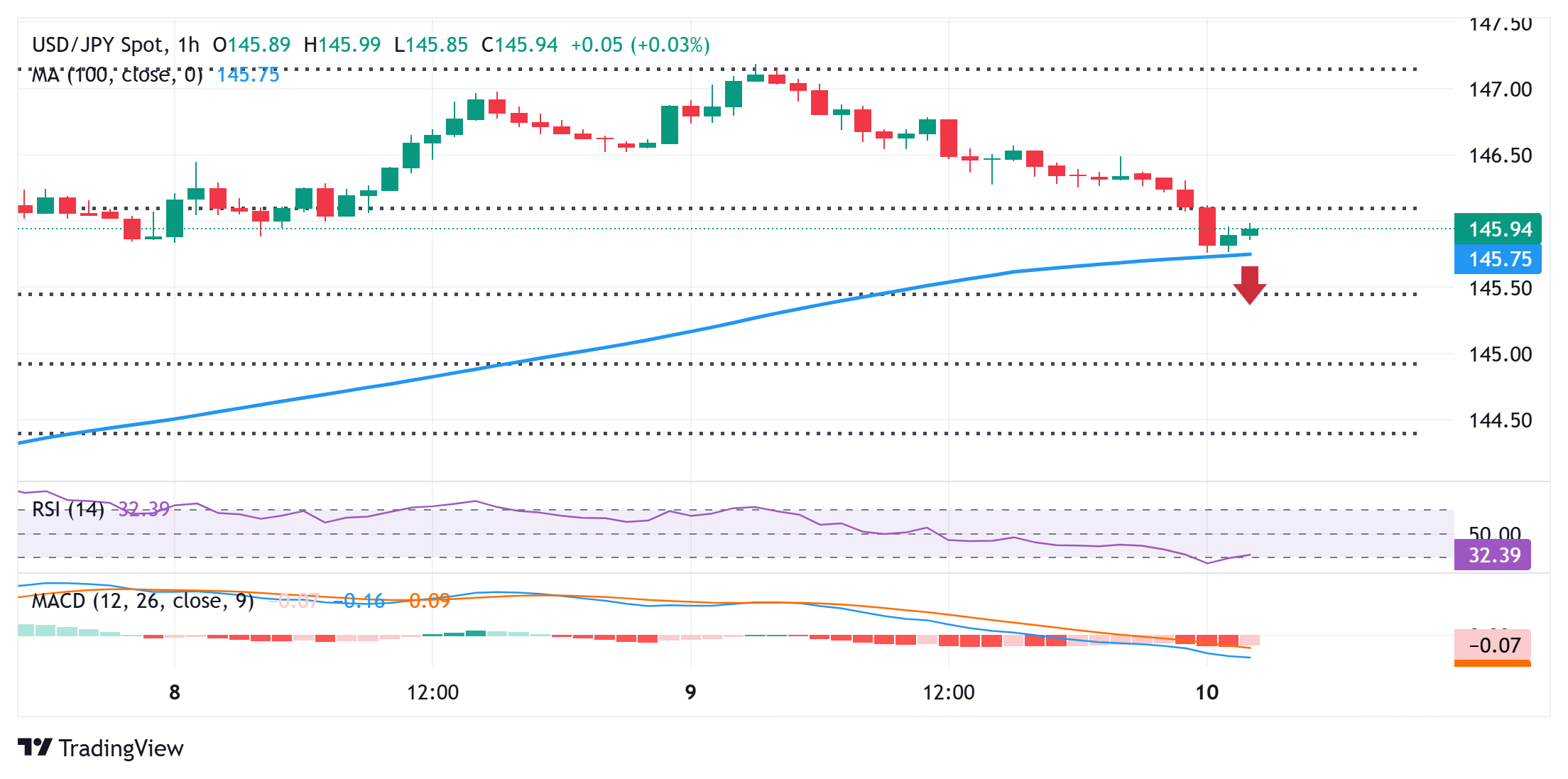Japanese Yen flat lines against USD amid mixed cues; bearish bias seems intact

- The Japanese Yen attracts some intraday sellers and stalls its recovery from a two-week low against USD.
- Trade jitters keep investors on edge and help limit deeper losses for the safe-haven JPY, capping USD/JPY.
- Expectations that the Fed will cut rates in 2025 weigh on the USD and also act as a headwind for the pair.
The Japanese Yen (JPY) attracts fresh sellers following an intraday uptick on Thursday and hangs near the daily low against its American counterpart heading into the European session. Investors now seem convinced that rising trade tensions would add to woes for Japan’s economy, and force the Bank of Japan (BoJ) to forgo raising interest retracement level of the recent move up from the monthly swing low could be seen as a key trigger for the USD/JPY bears. The subsequent fall, however, finds some support near the 145.75 region, representing the 100-hour Simple Moving Average (SMA). The said area should now act as a pivotal point, below which spot prices could extend the fall towards the 38.2% Fibo. retracement level, around the 145.50-145.45 area. Some follow-through selling could eventually drag the pair to the next relevant support near the 145.00 psychological mark, or the 50% retracement level.
On the flip side, any recovery beyond the 146.00 mark might now confront resistance near the 146.25-146.30 area ahead of the 146.55 region. A sustained strength beyond the latter will suggest that the corrective pullback has run its course and allow the USD/JPY pair to reclaim the 147.00 round figure. The momentum could extend further towards the 147.60-147.65 intermediate hurdle en route to the 148.00 mark, or the June monthly swing high.
Risk sentiment FAQs
In the world of financial jargon the two widely used terms “risk-on” and “risk off” refer to the level of risk that investors are willing to stomach during the period referenced. In a “risk-on” market, investors are optimistic about the future and more willing to buy risky assets. In a “risk-off” market investors start to ‘play it safe’ because they are worried about the future, and therefore buy less risky assets that are more certain of bringing a return, even if it is relatively modest.
Typically, during periods of “risk-on”, stock markets will rise, most commodities – except Gold – will also gain in value, since they benefit from a positive growth outlook. The currencies of nations that are heavy commodity exporters strengthen because of increased demand, and Cryptocurrencies rise. In a “risk-off” market, Bonds go up – especially major government Bonds – Gold shines, and safe-haven currencies such as the Japanese Yen, Swiss Franc and US Dollar all benefit.
The Australian Dollar (AUD), the Canadian Dollar (CAD), the New Zealand Dollar (NZD) and minor FX like the Ruble (RUB) and the South African Rand (ZAR), all tend to rise in markets that are “risk-on”. This is because the economies of these currencies are heavily reliant on commodity exports for growth, and commodities tend to rise in price during risk-on periods. This is because investors foresee greater demand for raw materials in the future due to heightened economic activity.
The major currencies that tend to rise during periods of “risk-off” are the US Dollar (USD), the Japanese Yen (JPY) and the Swiss Franc (CHF). The US Dollar, because it is the world’s reserve currency, and because in times of crisis investors buy US government debt, which is seen as safe because the largest economy in the world is unlikely to default. The Yen, from increased demand for Japanese government bonds, because a high proportion are held by domestic investors who are unlikely to dump them – even in a crisis. The Swiss Franc, because strict Swiss banking laws offer investors enhanced capital protection.
